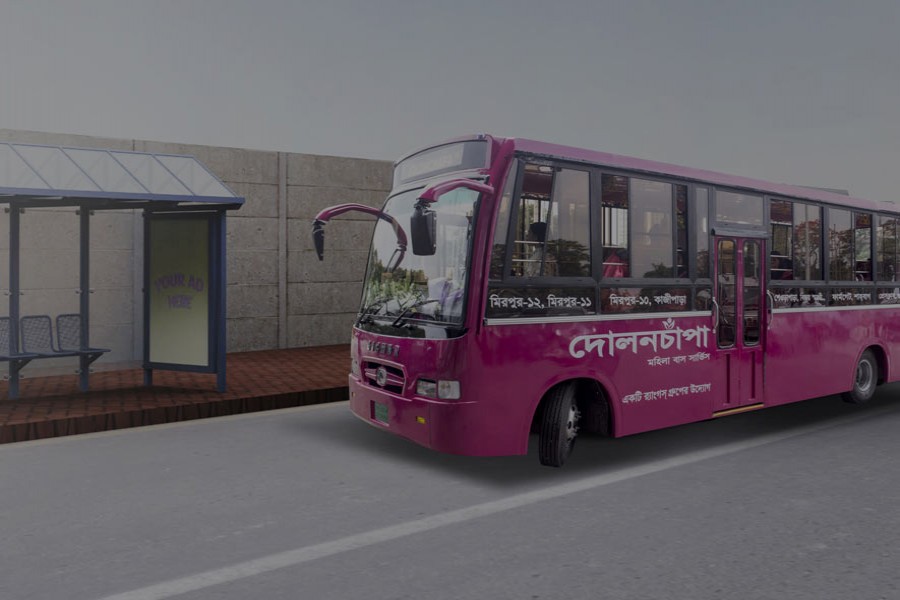
Published :
Updated :

Dhaka residents who commute regularly on local buses must have seen the ordeals the women passengers go through day in and day out. With the introduction of spacious and semi-deluxe buses, these dreadful experiences have considerably been cut down. At present, these buses keep first three rows of seats reserved for women. Awareness about women's rights among the male passengers has increased remarkably. The defiant passengers who do not want to miss a chance to manage a space in the reserved seats invariably take the heat: angry protests and jeers from a section of sympathising male passengers in a bus. As part of a general scenario, many women passengers are now seen travelling by city buses in tolerable comfort.
Although the whole thing can be termed a spectacular development, deficiencies and inadequacies still plague the scenario. Scores of conventional local buses are still unfriendly to female passengers. The male bus staff members as well as some passengers treat them in objectionable manners.
Against this backdrop, the introduction of women-only buses comes as a great relief to Dhaka's female commuters. They include mostly service holders, students, and women going for or returning home after shopping in distant spots. Male passengers are prohibited in these buses. The drivers are male. But young women serve in these buses as conductors. It has been more than a couple of years since these women-only buses hit the capital's streets. But thanks to their small number and the limited length of routes, these government-run BRTC (Bangladesh Road Transport Corporation) buses could not make much positive impact on the female commuters. They eventually emerged as a service largely going unnoticed and ineffectual.
In this age of privatisation, a vital social area like operating women-only buses cannot be expected to be left untapped. As has been awaited eagerly, the bus service Dolonchapa appeared as a great blessing for the capital's female commuters. The service came into operation in 2018, with some more buses being added to the fleet early this year. The non-AC Dolonchapa is run by Rangs Group and Volvo Elcher Commercial Vehicles operating on Motijheel-Mirpur-12 route and on Azimpur-Mirpur route. The bus service is set to be expanded throughout the city. The city road transport authorities want keep the buses limited to 30, which has been found by many as inadequate given the fast rise in the number of young female commuters. Although the busses have roomy interiors with comfortable seats, the sitting arrangements are limited to only 34. Many have brought into question as to how far will this commuting facility cater to Dhaka's female commuters during rush hours. The buses are apparently safe and rider-friendly, with the interior covered by CCTV. But alongside the safety measures and a convenient atmosphere, the issue of serving greater numbers of female passengers also deserves attention.
Currently, around 21 per cent of the city's female population uses public buses daily. Coming to the women-only buses, the state-run single and double-decker vehicles operate on over a dozen routes in the capital. These services have also been viewed as inadequate. The scourge of sexual harassment on conventional public buses continues to hound female passengers. According to a study conducted by BRAC, 94 per cent women commuting on public transport suffer one or another kind of harassment. The culprits include both bus staff and aberrant passengers. Given this appalling reality, more women-friendly buses need to be brought into regular service.


 For all latest news, follow The Financial Express Google News channel.
For all latest news, follow The Financial Express Google News channel.